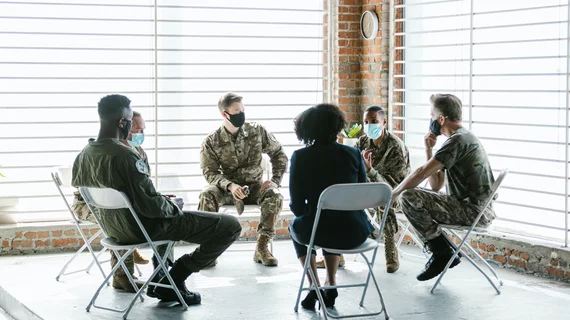Veterans who experience chronic pain and trauma have connectivity abnormalities on brain imaging
A first of its kind study that analyzed brain connectivity patterns in veterans who live with chronic pain and trauma has uncovered patterns that could help guide the treatment of both pain and mental health disorders.
The new research, published Frontiers in Pain Research, utilized functional magnetic resonance imaging to objectively measure how trauma and pain impact brain connectivity while at rest. In doing so, researchers identified three different brain subtypes that could be indicative as to how susceptible veterans are to symptoms that accompany pain and trauma.
“We found three separate subgroups showing different functional connectivity between the chosen ROIs that play an important role in pain, reward, and trauma, despite having similar demographic and clinical diagnostic characteristics. This study suggests that even though they may have similar demographic and diagnostic characteristics, there may be neurobiologically dissociable biotypes with different mechanisms for handling pain and trauma,” first author Professor Irina Strigo of the San Francisco Veterans Affairs Health Care Center, and co-authors explained.
The authors point out that pain and trauma frequently co-occur, but that both are measured subjectively in the form of surveys, psychological analyses, etc. Functional MRI scans offer greater insight into how veterans with the same diagnosis, regardless of their medical or combat history, fare differently by objectively analyzing neurobiological connections in the brain.
Researchers examined these connections by having 57 veterans diagnosed with chronic back pain and trauma undergo functional MRI scans while at rest. Participants had a range of self-reported symptoms for both conditions. Using artificial intelligence, the veterans were divided into three groups based on their brain connection signatures—low, medium and highly symptomatic.
In the areas of the brain where pain, reward and trauma are processed, different connectivity patterns were observed in every group. In the “low symptom group” greater functional connectivity was noted from NAc, ACC, and PCC to the insula, and from the thalamus to ACC and bidirectional interconnections between the thalamus and PCC. This group was said to be the least clinically impaired and have the greatest connectivity of all three groups. In contrast, the “high symptom group” exhibited poor connectivity in these regions, which the researchers hypothesized put them at greater risk of anxiety and other symptoms when experiencing pain or reliving trauma.
When discussing these patterns, particularly those that pertained to the insula, the authors wrote:
“The insula plays a pivotal role in emotional and interoceptive processing. Besides its proposed role as an interoceptive sensory cortex, substantial evidence supports the notion that the insula represents a hub for dynamic switching between different networks, i.e., based on the emotional and interoceptive needs of an organism, the insula helps to access attention, working memory, and other higher-order cognitive processes.”
Though it remains unclear as to whether these patterns are a result of pain and trauma or if they indicate that a person is more susceptible to the symptoms, authors noted that these objective measures could help to personalize treatment to individual needs.
Related neuroimaging articles:
Connectivity abnormalities observed on MRIs of insomnia patients
Machine learning model quickly and accurately predicts outcomes for TBI patients
Memory complaints associated with structural brain abnormalities and increased dementia risk

